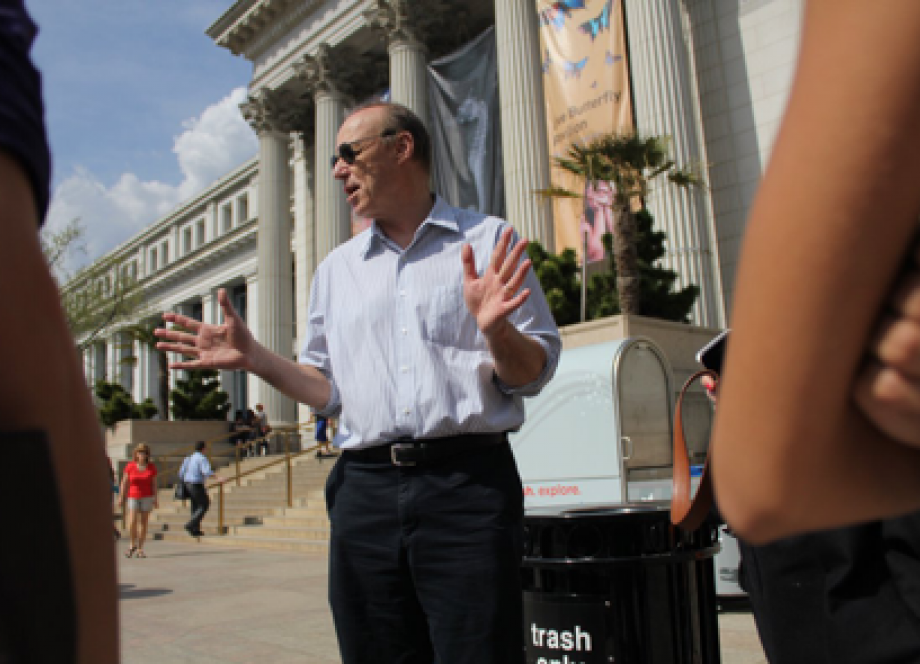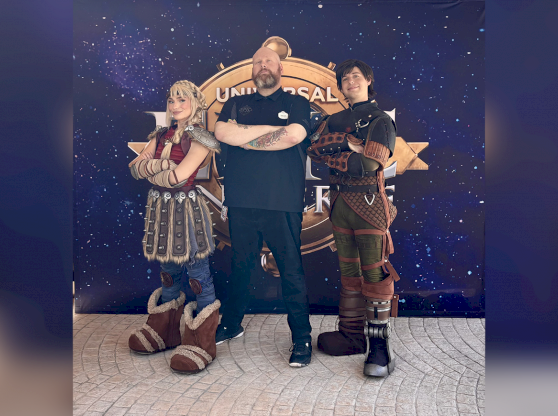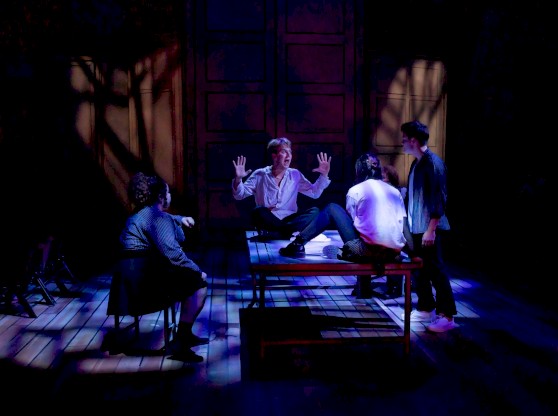Dr. Glenn Willumson was a professor of art history and the founding director of the graduate program in Museum Studies at the University of Florida’s School of Art + Art History. His research interests include the history of photography and American visual culture.
Chandler: As the first director of the Museum Studies Program, what interested you in coming to Gainesville to direct the program?
Glenn: Well, there were many things. One of them was the UF reputation. It's one of the top 25 universities in the United States, so that was a big draw. I liked the ability to start a new program and to shape it into an effective force for museums. I also wanted to return to teaching full-time, which I hadn't been able to do for about seven or eight years, and I thought it was a good fit for my skill set.
And then, when I visited the university, I was impressed by the amount of support from the campus and local museums and other departments and programs within this school and outside of the school. So, all of that was very positive.
Chandler: So how did your background contribute to this? You said you worked in art museums mostly before coming to the position. Did you previously teach at a university as well?
Glenn: I had an unusual background, which was that I was a high school teacher for ten years, teaching English, and then decided to go back to the university and get a Ph.D. in art history.
During my doctoral study, I taught a summer class for the University of California, Santa Barbara. After I graduated, I went to work for the Getty and took a leave to teach full-time at the University of California, Irvine. Then moved to Penn State to work as a curator, and taught contemporary art, history of photography, and introduction to museum studies.
Chandler: What were some of the initial challenges you faced when leading the program?
Glenn: The first thing was shaping the program. There was a lot of bureaucratic work; for example, none of the museum studies classes had course numbers. So, there was all this paperwork that had to run through different committees in order to get approved.
And then, the original set up of the Museum Studies Program had two classes in registration and no course in museum education. I wanted all of these different areas to be covered: registration, curatorial, education, and museum theory.
I was also the only faculty member and had to recruit faculty to teach all these different classes. One person who was there at the beginning and taught regularly was Dixie Nielsen. She taught the collection management class and did a great job. She also served as the acting director of museum studies during my research leave. But there was nobody to teach education or other courses, which was a major hurdle. Then lastly, we needed to establish a national profile for the Museum Studies Program.
Charlotte: What are some of the ways you promoted the Museum Studies Program?
Glenn: The first-year I met with people who ran museum studies programs to find out how they were organized, what worked, and what didn't work. I also met with professional colleagues in museums and see what they looked for in a prospective employee.
The other important thing was to establish strong relationships with the Florida Museum of Natural History and the Harn Museum of Art. Even though they had been supportive of having a museum studies program, they didn't know me, and they didn't know the students, and I didn't know what I needed to know from them. How could they support the Museum Studies Program? How could the Museum Studies Programs support what they wanted to do? So I met with different administrators at the Matheson, the Harn, and the FLMNH.
I also got involved with AAM (American Alliance of Museums) and joined the Committee for Museum Professional Practice and served on the board for eight years. And I gave presentations about Museum Studies at the College Art Association, the American Alliance of Museums, the American Association of Museums and Galleries, and at the Getty.
We also needed to spend time recruiting, and we needed to find internships for students.
As the program grew, I relied on current students to talk to prospective students, and as the program became successful, recruiting became easier.
Chandler: What did you look for in students as you helped begin the program and started accepting applications?
Glenn: After about three or four years, we had three or four more times as many applications as we had openings in the program. I was accepting six or seven students a year, and we regularly had between 30 and 40 applications.
I began by making grade point average and GRE scores the most important considerations for admission. Over time, the most successful students helped me realize that the criteria I should be using for admission was to find students who were involved in the university as undergraduates, who were in clubs and volunteer organizations, and who were active in museums. Personally, I cared less about museum experience than I did about whether or not they had engaged the community in some way while they were undergraduates.
Chandler: What was your greatest accomplishment and joy with the program?
Glenn: I'd say the greatest accomplishment was the high student placement rate. The fact that we graduated 45-50 students in the 15 years I was director, and over 95% went on to work in museums and made significant contributions to the field. I've met with a lot of former students when I've traveled, and they're all doing great things and are affecting the museums and thereby affecting the communities that they're working in. I don't think you could ask for any more than that, frankly.
And in terms of joy, I just loved working with the students. They were smart, they were energetic, they were enthusiastic. They really wanted to know whatever it was they needed to know to work in a museum and to do a good job. And again, you can't really ask for anything more than that.
Chandler: Where are you now? What type of projects are you working on?
Glenn: I'm trying to spend more time with my family and see my five grandchildren, who are all under the age of eleven. I'm also doing some traveling with my wife. I'm continuing to teach on occasion and have been involved in the London intersession program with the University of Ohio.
Retirement has also allowed me to finish some research projects around questions about the development of the market for photographs. Most recently, I've submitted an essay to the Smithsonian about a group of early photographs that were among the first to be judged as fine art and given to the Metropolitan Museum. When that’s finished, I have another project about an early collector of photographs.



